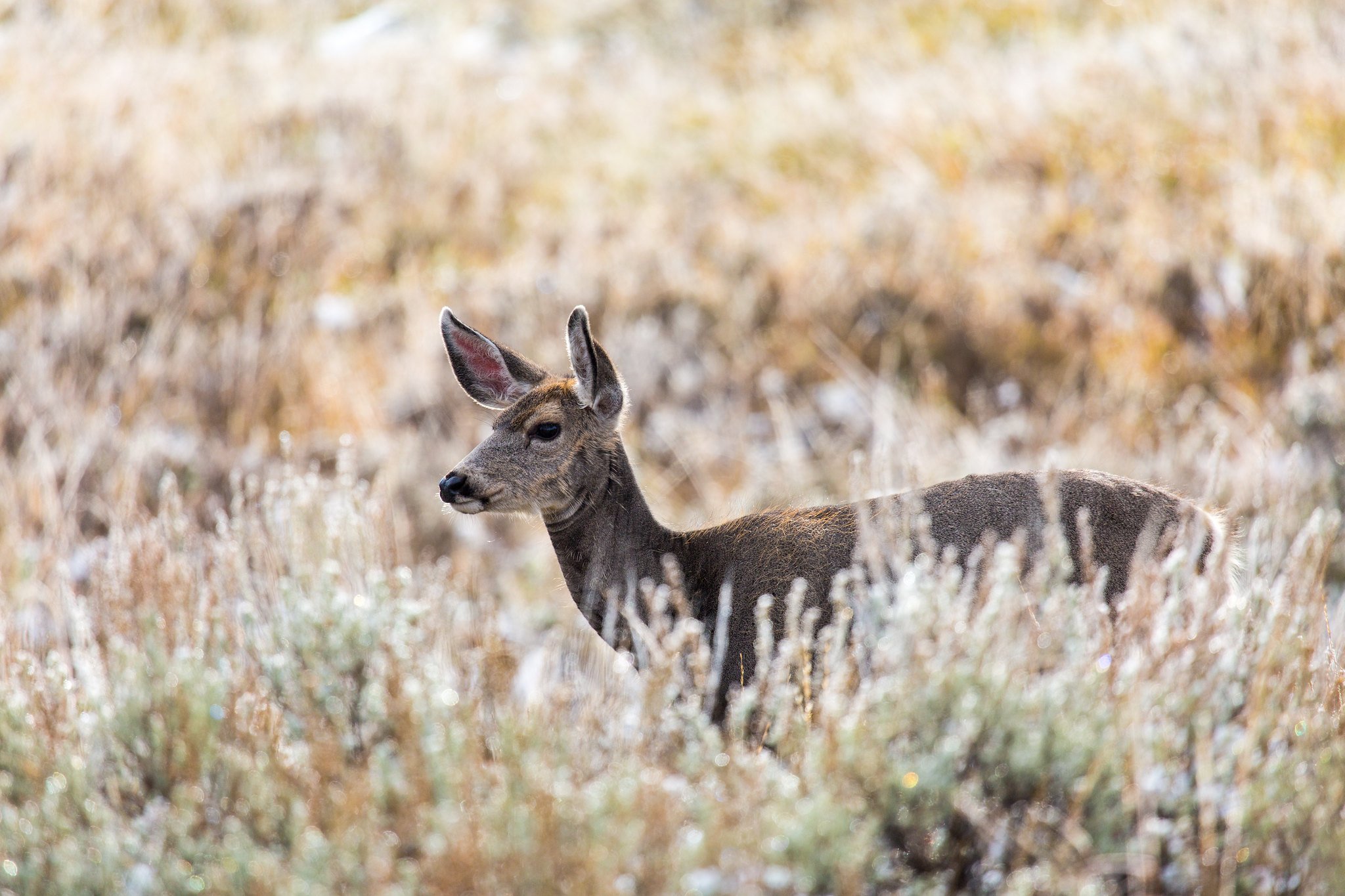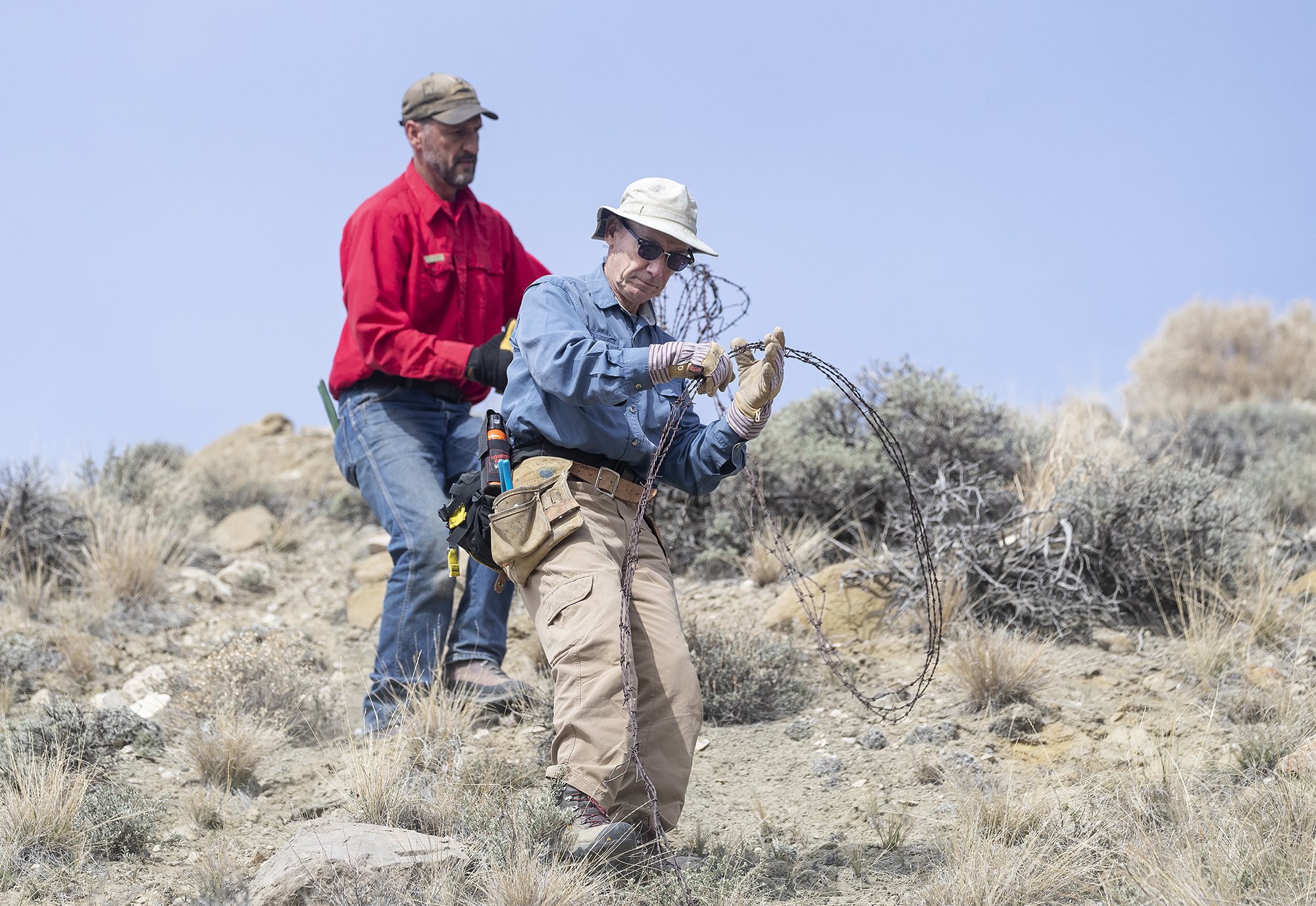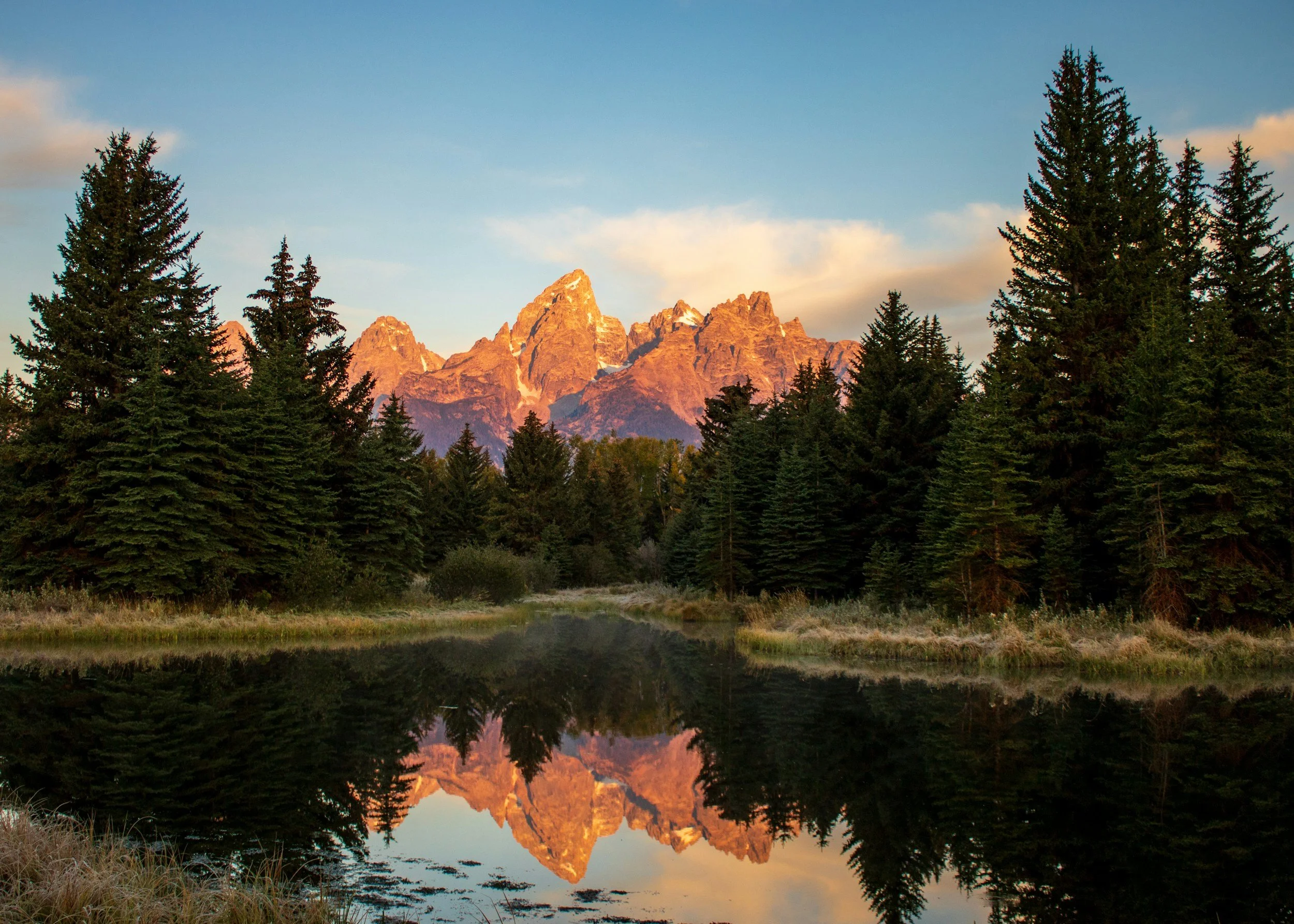
Preserving Habitat Connectivity with the Absaroka Fence Initiative
The Greater Yellowstone Ecosystem is home to a wide array of diverse habitats that sustain robust wildlife populations.
The wide-open sagebrush steppe, grasslands, river valleys, and lush forests of the ecosystem support an abundance of wide-ranging species like mule deer, elk, and pronghorn. The ability of these animals to move freely across the landscape – whether during daily searches for food, water, and protection, or during sweeping seasonal migrations to summer and winter ranges – is a vital part of what allows them to survive and thrive here.
Yet as wildlife move within and across the landscape, they encounter numerous barriers that restrict their ability to meet their daily and seasonal needs. One such barrier is fencing. Crisscrossing Greater Yellowstone are fences that mark property boundaries, support ranching livelihoods, line highways, and more. Fences pose several challenges to hooved animals like deer, pronghorn, and elk – collectively called ungulates – and impact wildlife on both the individual and population levels.

Fences pose several challenges to hooved animals like deer, pronghorn, and elk – collectively called ungulates – and impact wildlife on both the individual and population levels.
Individual animals can get tangled as they try to jump over or maneuver under wire fences – sustaining life-threatening injuries or becoming stuck and dying. Fences can also disrupt the long-distance migrations of entire herds, which prevents wildlife from reaching the seasonal habitat they need to survive the summer and winter months. The damage caused to fences by wildlife is also costly for property owners; repairing fencing or dealing with livestock that have escaped as a result of damaged fencing impacts livelihoods and reduces tolerance for free-ranging ungulates.
In the community of Cody, Wyoming, a group of landowners, agricultural producers, government agencies, nonprofit organizations, community members, and outdoor enthusiasts is exploring innovative ways to address the challenges fences pose for wildlife. Cody is a gateway community to Yellowstone National Park, located just 50 miles from the park’s eastern boundary. The landscape around Cody provides critical habitat for numerous species and is part of an important migratory pathway for mule deer, pronghorn, and elk. The community takes pride in the wild nature of the area and the wildlife that inhabit it, as well as the area’s rich legacy of ranching. Because interactions between fencing and wildlife have consequences for both ranching and wild animals, stakeholders came together with a common goal of finding a solution to improve the ability of wildlife to move across the landscape that prevents both harm to wildlife and damage to fences.
The desire to protect wildlife while preserving the integrity of the area’s ranching livelihoods soon developed into a cohesive effort called the Absaroka Fence Initiative.

Formally established in 2020 by a group of motivated stakeholders including the Greater Yellowstone Coalition, the initiative is an innovative, community-driven approach to the fencing challenge that fosters good neighbors, enhances wildlife movement, maintains fences functional for livestock, and helps evolve and share knowledge of effective fence designs in the Greater Yellowstone Ecosystem.
The initiative works with willing landowners and land managers to add, remove, or modify fences in ways that benefit both wildlife and people.
While fence removal is a straightforward solution for enhancing wildlife movement, fence modification can include changing the location of a fence or altering the design to make it easier for wildlife to navigate or identify. Wildlife-friendly fence designs include utilizing smooth wire instead of barbed wire, using three strands of wire instead of five or six, spacing the wires in a way that allows for animals to easily crawl under or jump over, and adding fladry – small strips of fabric or flags that flap in the breeze – to make fences more visible.
Since completing its first project in 2021, the Absaroka Fence Initiative has modified or removed almost 130,000 feet of fencing.
This work has directly benefited the wildlife and landowners of the Cody region, preserving wildlife movement and preventing property damage.
Community-driven projects like the Absaroka Fence Initiative demonstrate the power of bringing people together to advance innovative solutions to real world challenges that impact both people and wildlife. Through partnerships like this one, we are helping ensure the Greater Yellowstone Ecosystem continues to support healthy wildlife populations and sustains the ranching livelihoods that help preserve open space for generations to come.
Aerial elk photo credit Christine Page




